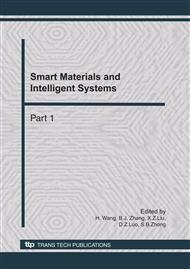p.728
p.733
p.739
p.744
p.749
p.753
p.758
p.763
p.768
A Porous Carbon Prepared by Using a Mordenite Mineral as Template and its Cyclic Voltammetry Study in H2SO4
Abstract:
A natural mordenite mineral has been used as a template to prepare a templated carbon. X-ray diffraction (XRD), nitrogen adsorption, scanning electric microscope (SEM) and cyclic voltammetry (CV) are used to analyze the phase composition, pore structure, micro morphology and electrochemical performance. The specific surface area of the templated carbon is 724m2/g, and the mesoporosity is high to 63.8%. In H2SO4 medium, the carbon has large capacity and good rate capability. The capacity of the carbon decreases from 103 to 94F/g (the capacity remains more than 92%) when the scan rate increases from 10 to 200mV/s. The CV curve of the templated carbon exhibits rectangle-like shape, and the shape keeps well at high scan rate.
Info:
Periodical:
Pages:
749-752
Citation:
Online since:
October 2010
Authors:
Price:
Сopyright:
© 2011 Trans Tech Publications Ltd. All Rights Reserved
Share:
Citation:


